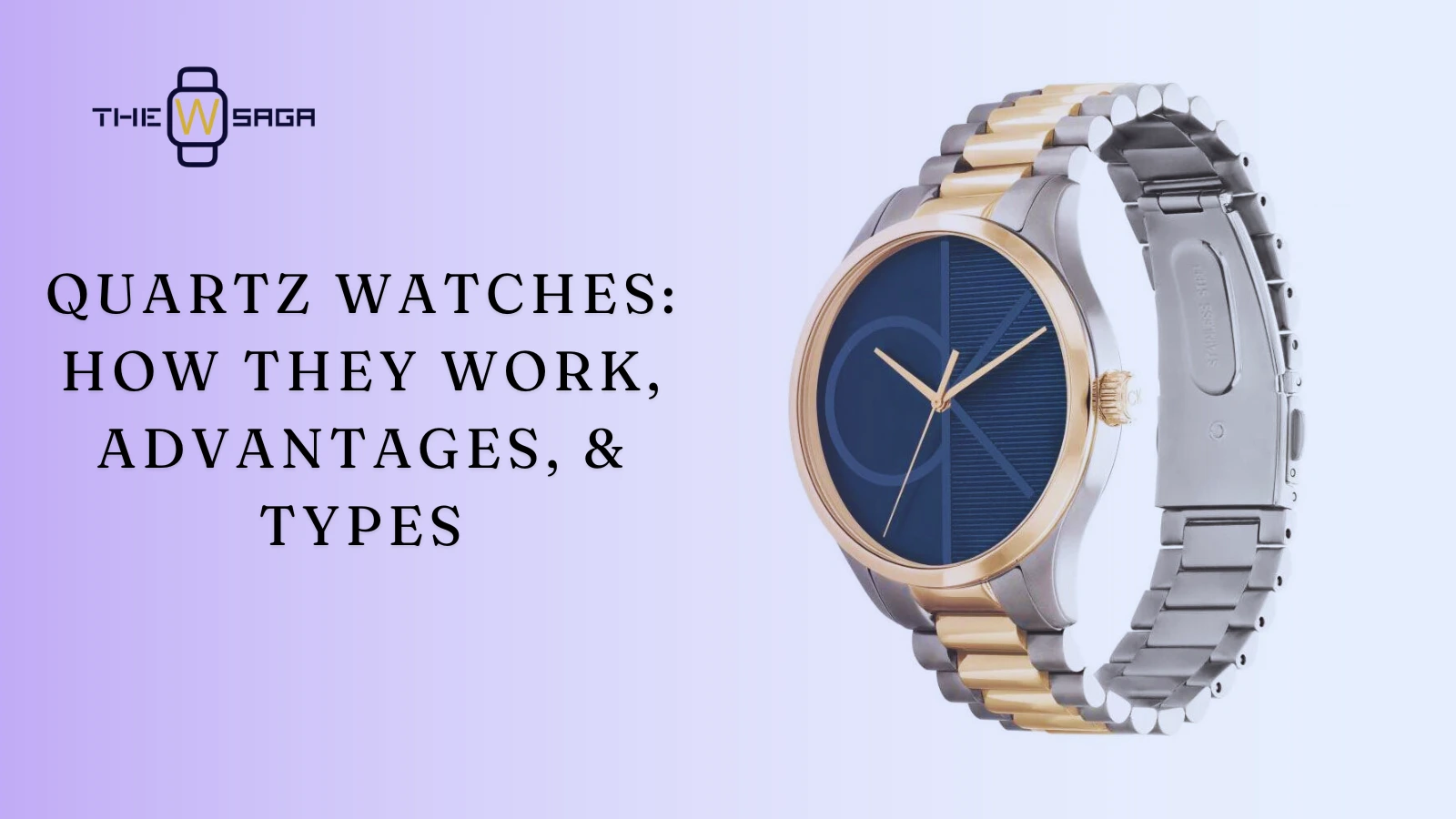Table of Contents
What is a Quartz Watch?
A quartz watch is a type of watch that uses a quartz crystal to keep time. The crystal oscillates at a precise frequency when an electric current is applied to it, typically 32,768 times per second. This frequency is then divided down to create the ticking of the watch’s second hand. Quartz watches are known for their high accuracy and reliability compared to mechanical watches, as they are less affected by environmental factors like temperature and movement.
How Quartz Watches Work
Quartz watches operate using a simple yet ingenious mechanism. Here’s how they work:
The Quartz Crystal
At the core of most quartz watches is a tiny little crystal, shaped like a tuning fork. Quartz is a piezoelectric material, meaning it can generate an electric charge when subjected to mechanical stress. In a quartz watch, a battery sends an electrical current through the quartz crystal, causing it to vibrate.
The Oscillation Process
The quartz crystal vibrates at a very precise 32,768 times per second. The watch circuit then counts these vibrations to keep time by measuring the number of oscillations or vibrations that the crystal consistently produces. It’s perfect as it can be easily divided down to one pulse per second, the lowest common timekeeping denominator that is dirt simple and ultra-accurate.
The Time Display
Regular electrical signals are output from the pulses generated by the quartz crystal. A small motor then feeds these signals to the watch hands or time displays. With that stable frequency from the quartz crystal, you should know it keeps excellent time as well.
Advantages of Quartz Watches
Quartz watches offer several advantages over their mechanical counterparts:
High Accuracy
For movement, you can count on the most traditional watches—those with quartz movements boast some of the best accuracy in watchmaking, generally only losing or gaining a few seconds per month. Most mechanical watches are largely unable to compete with this level of precision; many will lose or gain several minutes over that same amount of time.
Low Maintenance
Also, because quartz watches have fewer moving parts, they need a little maintenance. They do not have to be wound or require a service interval on the more intricate mechanical parts, making them easier for everyday use.
Affordability
Quartz watches are generally less expensive to build than mechanical movements. These pieces are easier and cheaper to manufacture, so they become available in the far broader market.
Durability
With fewer moving parts and a robust battery-powered mechanism, quartz watches are often more durable and less susceptible to damage from shocks or drops.
Types of Quartz Watches
Quartz technology is versatile and is used in various types of watches, each offering unique features:
Analog Quartz Watches
These watches feature traditional hour, minute, and second hands on a dial. They combine the classic look of a mechanical watch with the accuracy of quartz technology.
Digital Quartz Watches
Digital quartz watches display time using LCD or LED screens. They often include additional features like alarms, timers, and backlighting.
Solar-Powered Quartz Watches
These watches are equipped with solar panels that convert light into electrical energy, charging the watch’s battery. This eco-friendly option eliminates the need for regular battery replacements.
Quartz vs. Mechanical Watches: A Quick Comparison
| Feature | Highly accurate (a few seconds/month) | Mechanical Watch |
|---|---|---|
| Accuracy | Highly accurate (few seconds/month) | Less accurate (may lose/gain seconds/day) |
| Maintenance | Low (battery replacement every 1-2 years) | Higher (requires regular servicing) |
| Power Source | Battery | Mainspring (manual or automatic winding) |
| Price | Generally affordable | Often more expensive |
| Craftsmanship | Mass-produced, less intricate | Handmade, intricate movements |
The Impact of Quartz Technology on the Watch Industry
The introduction of quartz technology in the 1960s revolutionized the watch industry, leading to what is known as the “Quartz Crisis” in the 1970s. Traditional Swiss watchmakers, who specialized in mechanical timepieces, faced significant challenges as quartz watches gained popularity due to their accuracy, low cost, and convenience.
The Quartz Crisis
The widespread adoption of quartz watches led to a decline in demand for mechanical watches, forcing many traditional watchmakers to either adapt to the new technology or go out of business. However, this period also sparked innovation, leading to the resurgence of high-end mechanical watches as luxury items.
Modern Watchmaking
Today, quartz watches dominate the market in terms of volume, but mechanical watches have found a niche among enthusiasts and collectors. The coexistence of both technologies has enriched the watch industry, offering consumers a wide range of options to suit their tastes and needs.
Conclusion
Quartz watches are the result of a technological breakthrough; they are extremely accurate, reliable, and relatively cheap. You do not have to wind them up, and the durability of the battery is about three years. Whether you tend to the style, so it is an analog quartz watch, or you need a highly functional digital one, quartz technology guarantees that you will always know what time it is because your watch will never let you down. That is why almost all the world’s population uses them now; however practical and modern, quartz watches have kept something traditional in them, which is perhaps the reason for their immense popularity.

